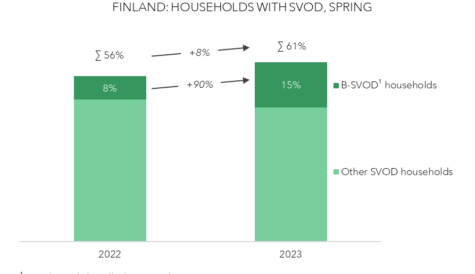
After more than 40 years of operation, DTVE is closing its doors and our website will no longer be updated daily. Thank you for all of your support.
Netflix shares drop as post-COVID subs growth slows to among lowest on record
Netflix’s global subscriber growth stalled dramatically in the first quarter of 2021, prompting a sell-off from investors that saw its share price plummet by almost 10%.
The Queen’s Gambit streamer had enjoyed rampant growth during 2020 but in its Q1 results yesterday, Netflix revealed it had only added 3.98 million net new paid subscribers, down from 8.5 million reported in the previous quarter.
That was more than two million subscribers down on the streamer’s own predictions for Q1 and a marked contrast with this time last year, when Netflix added more than 15 million new customers.
Extended slowdown
The streamer added that it did not expect subscriber growth to pick up soon, with Q2 growth expected to total one million new customers, which would be the lowest quarter growth for more than five years.
A drop-off in subscriber growth had been widely predicted by analysts, but the extent of the decline in new subscribers caused a sell-off among investors sending shares down below $500.
The rapid growth during the height of COVID last year was blamed by Netflix bosses, who also cited pandemic-induced production hiatuses – and the knock-on effect on new programming hitting the service – a seasons for the decline.
“We believe paid membership growth slowed due to the big COVID-19 pull-forward in 2020 and a lighter content slate in the first half of this year, due to COVID-19 production delays,” the streamer said in a note to shareholders.
Despite a slowdown in subs growth, the streamer still saw its revenue increase by more than 24% to $7.1bn, with earnings at $1.7bn. Part of that was because of price increases, with customers across Europe and North America among those recently facing hikes.
Second-half response & spending
The streamer has also faced extensive competition from recently launched streaming services such as Disney+, NBCUniversal’s Peacock and HBO Max among numerous others.
Despite that, Netflix said it expected subscriber numbers to “re-accelerate” in the second half of 2021 as the programming pipeline returned.
New seasons of fan-favourites such as Sex Education, La Casa De Papel (aka Money Heist) and The Witcher are in the works, while movies set to debut include Gal Gadot-starring Red Notice.
The streamer added that it expects to spend around $17bn on content across the year, up from just under $12bn last year as production returned.
“As we’ve noted previously, the production delays from Covid-19 in 2020 will lead to a 2021 slate that is more heavily second half weighted with a large number of returning franchises.
“And while the roll out of vaccines is very uneven across the world, we are back up and producing safely in every major market, with the exception of Brazil and India. Assuming this continues, we’ll spend over $17bn in cash on content this year and we’ll continue to deliver an amazing range of titles for our members with more originals this year than last.”
Analysis
While the slowdown follows the ratcheting up of streaming competition, OMDIA’s senior research director Maria Rua Aguete said the bigger factor was the soaraway growth in 2020 as locked down viewers turned to Netflix for entertainment.
“It is not really the effect of Disney or Amazon, these three services will still dominate the streaming market in 2025 – it was more due to the huge growth that streaming video got in 2020,” she said.
Rua Aguete had previously predicted the slowdown in December, highlighting the “unexpected uplift” from COVID-19.
“Households in lockdown have binged content, driving significant uptake of both incumbent and newly-launched SVOD services. But having exhausted the pool of new households to sell to, SVOD services must brace themselves for a much slower 2021.
“The reason for this stark contrast with the year before is that SVOD, more than many other types of entertainment, must maintain a healthy pipeline of potential new subscribers and carefully manage the high level of churn that is incumbent to monthly subscription products.
“2020 has seen this pipeline exhausted; new subscribers have been converted at astonishing rates and the pool of subscribers in potential have been vastly reduced. Not only does this impact growth, but also strategy. To grow now, especially when faced with new competition, services such as Amazon and Netflix must refill the pot and gain access to new sources of subscriptions. In essence, this means being more open to integrated deals with consumer gatekeepers, such as pay-TV providers and telcos. These deals will include further integrated libraries and even the bundling of SVOD services.
“2020 may have been a year of hubris for the SVOD industry, booming as all others struggled, but 2021 will be a year of humility; for the first time big SVOD players must rely on former rivals for their own success.”






